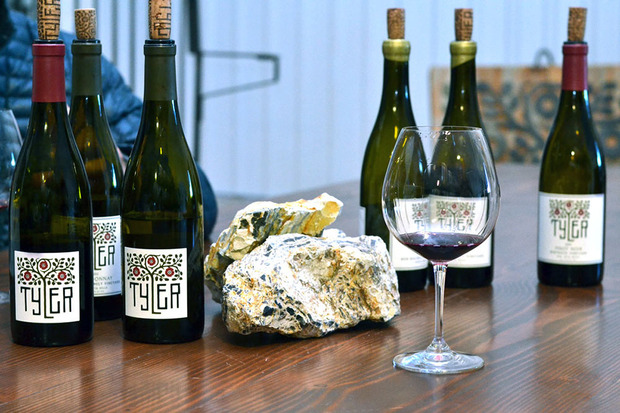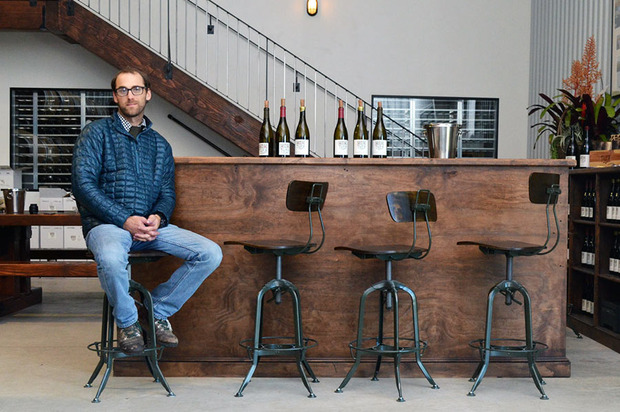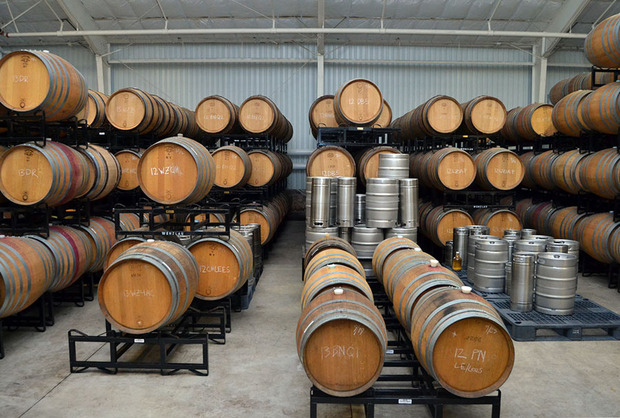Interview: Justin Willett of Tyler Winery
The young vintner on “restrained” wines and the advantages of not owning a vinyard

by Tariq Dixon

Very few vintners can boast having nine vintages under their belt at 32 years old. Even fewer can claim patronage by so many of America’s leading restaurants—Eleven Madison Park, Daniel and Le Bernardin included. But these are just a few of the accomplishments of Justin Willett, founder of Tyler Winery based in Lompoc, CA.
A History of Art and Architecture graduate with no formal education in winemaking, Willett began his career as a part-time apprentice at a local winery in the Santa Rita Hills. After a year of hands-on training, and sufficient savings from a concurrent restaurant job, he made his first vintage of eight modest barrels in 2005.
While Willett’s background and training were certainly non-traditional, more fascinating was his unorthodox palate. Emerging during a time when the market’s appetite was for full-bodied wines of high alcohol content, Justin was firmly committed to his preference for lighter-bodied Pinot Noir and Chardonnay. After facing some resistance during the brand’s initial seasons, consumers and critics alike slowly warmed up to Tyler Winery’s more “restrained” approach. Today, the brand has grown from its first eight barrels to over 2,500 cases annually. Willett met with CH to discuss process, consumers’ appetites and experimentation.

You often use the word “restrained” to describe your wines. Could you explain what this means and how this quality is achieved?
Firstly, we pick the grapes earlier so that they have higher acidity and less sugar—therefore, less alcohol. This means that the wine will be a little more vibrant, but also age better.
Then, during production, we try to not over-extract. The extraction process is kind of like making tea; you’re dipping the teabag in hot water to extract the fine flavors and aromatics, but if you leave it in too long it’s going to be bitter. Similarly, in winemaking, we’re constantly deciding how much to extract. I tend to do it less than most with the idea that the wine is going to be more refined and red-fruited, as opposed to dark and burly.
Flavor also depends on the type of barrel you use. I tend to lean more on older wood, which is less overtly oaky. I like what wood does texturally—it gives the wine a little bit more weight and rounds it out. But, I like the wines to express themselves, rather than other coffee or chocolate flavors that come from the char inside of the barrel.
Do you think a desire for this type of wine has increased? Has there been a shift in the market?
It’s actually a huge topic in winemaking right now. There’s a very decided divide—you can be more of a “ripe” guy or more of a “restrained” guy. Both sides are pretty loud right now, but the restrained camp seems to be where the market is moving.
When I first started doing it, everyone was like “You’re nuts.” High alcohol content was really en vogue, and I was trying to do things that were a little more elegant and feminine. It just wasn’t what people were into at the time. But the American wine-consuming public has had their time with the bolder, more obvious wines. Now, they want wines that are more cerebral, go better with food and have the ability to age.
There are also a couple of really big names in the wine business that have put their flags in the sand for leaner wines. Raj Par—the wine director of Michael Mina’s restaurant group—is a really big proponent. He’s even started a tasting called “In Pursuit of Balance” that features some great domestic producers—the best in my eyes. It’s really cool to be included in that and help push this new idea, which really feels like a movement.

There’s been a recent emergence of many other smaller scale producers, much like yourself, which feels like a movement of its own. Correct me if I’m wrong, but historically, those who owned the vineyards made the wine?
When people learn I’m in the wine business, they usually assume I have this big chateau with acres of vineyards. The reality is that wine doesn’t need to be this elitist thing. The majority of the world’s wine is certainly made very humbly.
I don’t own any vineyard land. I lease out acreage from existing vineyards, and I work on-site to make sure everything gets done to my specifications. Whether I own that piece of dirt or not—it’s about the sincerity of the process. There’s an old saying that goes, “The best fertilizer is the winemaker’s footsteps.” It’s exactly that; how much time you’re spending in the fields, really becoming intimate with the environment. A lot of the young guys are doing it that way. Large vineyard owners with a lot more zeroes in their bank accounts don’t necessarily go to those ends.
It also sounds like leasing land allows for a lot more flexibility because you can experiment with a range of vines, rather than committing to a particular type of grape?
That’s what’s cool for me. Tyler Wines is Pinot Noir and Chardonnay, but within that, I can add things and can take things away. You can buy a half acre here, half acre there and piece it together. I am really stoked about the portfolio I’ve been able to create because I get to work with the oldest and the rarest vines in this county. Creatively, it’s awesome. I look at this like a big lab—and that’s what really gets me going.
Tyler Winery’s 2011 vintage selection is available through their website, with prices ranging from $36 to $75 for 750ml.
Images courtesy of TRNK












